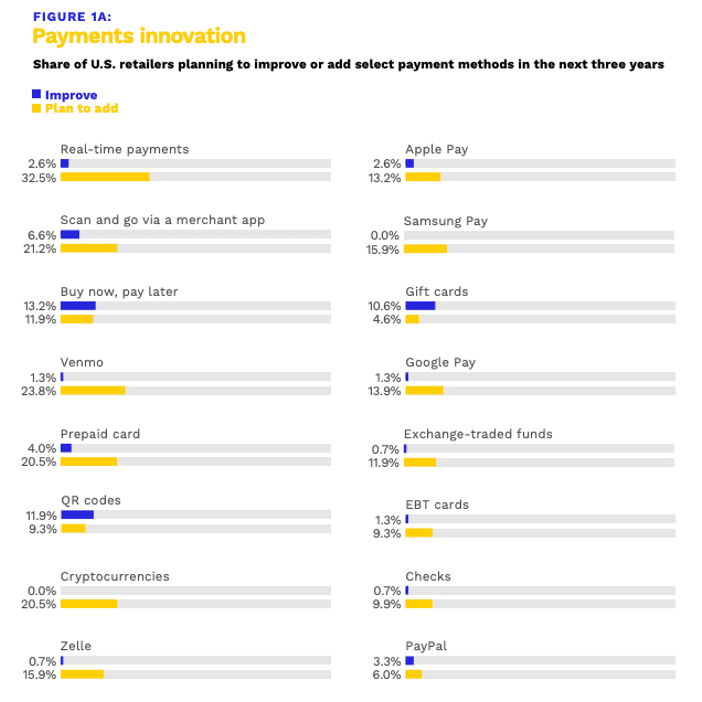Slumping Sales Could Stoke Retail Industry’s Appetite for Digital Efficiencies

With retailers posting their worst results in a year during their most important month for sales, the time for self-guided digitalization has arrived.
Instead of cranking out discounts and relying on strapped consumers to chase deals, a growing number of retailers and brands are poised to take matters into their own hands to help them weather a storm that could last for months and, by many accounts, may even worsen.
As Amazon CEO Andy Jassy told employees in a memo on the company’s mass layoffs, “we sometimes overlook the importance of the critical invention, problem-solving, and simplification that go into figuring out what matters most to customers (and the business), adjusting where we spend our resources and time, and finding a way to do more for customers at a lower cost (passing on savings to customers in the process). Both of these types of Invent and Simplify really matter.”
Beset retailers — including titans like Amazon — are relying on technologies and innovations to deliver speed and convenience in a more seamless way to realize cost savings as a counterweight, in addition to pumping up retail experience to draw more shoppers to spend.
PYMNTS has been tracking developments in key areas in the run-up to 2023. What is knowable are the plans retailers and their tech partners are following through on in real-time payments, checkout experience, and artificial intelligence (AI) in retail planning, from small and medium-sized businesses (SMBs) to enterprises.
Real-Time Payments Get Real
While P2P transfers from the likes of Venmo and Zelle are old news, it’s the push of real-time payments for retail purchases that appear set to make a breakthrough in 2023.
As PYMNTS’ Karen Webster wrote in her recent take on the new year, “In 2023, we will see payments and financial networks get smarter without crypto and blockchains, including private ones. Traditional networks will get faster as innovators make it possible to embed instant into any payments workflow at scale and businesses create new use cases for instant payouts.”
 Looking at the data supporting the rise of real-time, the study “Navigating Big Retail’s Digital Shift: The New Payments Strategy Evolution,” a PYMNTS and ACI Worldwide collaboration, notes that “Retailers are prioritizing real-time payments as an innovation launchpad. Currently, 52% of U.S. retailers and 56% of U.K. retailers accept real-time payments or plan to do so in the next three years. Real-time payments are a powerful innovation tool for an improved in-store customer experience.”
Looking at the data supporting the rise of real-time, the study “Navigating Big Retail’s Digital Shift: The New Payments Strategy Evolution,” a PYMNTS and ACI Worldwide collaboration, notes that “Retailers are prioritizing real-time payments as an innovation launchpad. Currently, 52% of U.S. retailers and 56% of U.K. retailers accept real-time payments or plan to do so in the next three years. Real-time payments are a powerful innovation tool for an improved in-store customer experience.”
Real-time payments not only make funds access seamless for consumers to pay or receive refunds, but they power other desirable features on the rise like scan and go and other unattended retail innovations.
Per that study, one-third (32.5%) of retailers plan to add real-time payments in the near future.
Checking Out New Online Checkout Experiences
A slew of eCommerce checkout improvements are being demanded by consumers who have tasted these experiences here and there, and now expect to encounter them everywhere.
Innovation is focusing on removing friction and beefing up product information and security. We explored this in the study “Building A Better Online Checkout Experience: The Key Features That Matter To Customers,” a PYMNTS and Checkout.com collaboration.
It’s not just the payments experience but things that happen before and after payment is made. Per the study, “Nearly three-quarters of consumers used their preferred purchase method in their latest online checkout. More than half of shoppers cite using seven other features, including easy order confirmation, cited by 70%, and secure account data storage, cited by 60%. Among customers who wanted to use checkout features, but the merchant did not offer them, the lack of free shipping has the most significant negative impact on customer satisfaction, reducing it by 14%.”
AI Keeping Shelves Stocked and Shoppers Happy
The just-concluded NRF Retail’s Big Show 2023 was a showcase for the proliferation of artificial intelligence (AI) systems and use cases for retailers, many of which are on the innovation agenda for 2023.
Taking the spotlight, Google Cloud and its suite of AI-powered retail solutions for store operations zero in on common issues like frustrating out-of-stock positions.
Per a press release, “Google Cloud’s new AI-powered shelf checking solution can help retailers improve on-shelf product availability, provide better visibility into what their shelves actually look like, and help them understand where restocks are needed.”
The solution uses two machine learning models “to solve a very difficult problem: how to identify products of all types, at scale, based solely on the visual and text features of a product, and then translate that data into actionable insights,” Google said.

Read: Google Cloud Launches AI-Powered Tools for Inventory-Checking and Shopping
